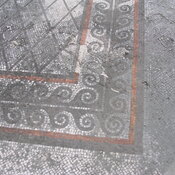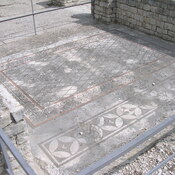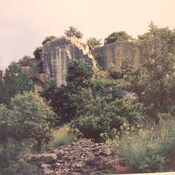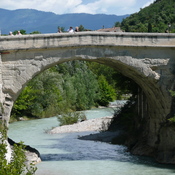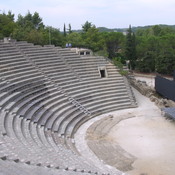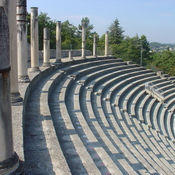Er zijn nog geen Nederlandstalige annotaties. Hier volgen annotaties in het Engels.
Though the current structure of the cathedral dates to the High Middle Ages and later periods, remains have been found at the Notre-Dame-de-Nazareth of a first- or second-century CE structure of roughly a similar orientation. It included an apse located roughly underneath that of the current church, suggesting that the structure served as a basilica. A large truncated double-column from the Roman structure remains visible within the church itself, having been rediscovered and re-erected.
Other ancient remains are found within and around the church, though their original provenance is unknown. The eleventh-century cloister includes a fragmentary sarcophagus depicting twelve togate men, possibly a reference to Christ and the apostles, as well as several Late Antique inscriptions masoned into the walls. Spoliated columns were used within the church. The eastern face of the medieval church was built upon a foundation of ancient architectural fragments, like capitals and column drums, which remain visible outside of the building. Around the western face of the church lay various further fragments, like demi-columns, which are likely also Roman in date.
Though the current structure of the cathedral dates to the High Middle Ages and later periods, remains have been found at the Notre-Dame-de-Nazareth of a first- or second-century CE structure of roughly a similar orientation. It included an apse located roughly underneath that of the current church, suggesting that the structure served as a basilica. A large truncated double-column from the Roman structure remains visible within the church itself, having been rediscovered and re-erected.
Other ancient remains are found within and around the church, though their original provenance is unknown. The eleventh-century cloister includes a fragmentary sarcophagus depicting twelve togate men, possibly a reference to Christ and the apostles, as well as several Late Antique inscriptions masoned into the walls. Spoliated columns were used within the church. The eastern face of the medieval church was built upon a foundation of ancient architectural fragments, like capitals and column drums, which remain visible outside of the building. Around the western face of the church lay various further fragments, like demi-columns, which are likely also Roman in date.





